Is Cyanuric Acid Essential for Hot Tub Maintenance?
September 30th, 2024
September 30th, 2024
A steaming hot tub is a sanctuary of relaxation, yet keeping its water pristine can feel like a chemistry experiment. Among the myriad of chemicals involved, cyanuric acid often arises as a point of contention. Many hot tub owners find themselves questioning its necessity, pondering whether it's just another chemical to juggle or a genuine ally in water maintenance.
Decades ago, when I first became a hot tub enthusiast, I vividly remember staring at a bewildering array of bottles. Each promised to keep the water sparkling and safe, but cyanuric acid stood out due to the mixed advice surrounding it. Friends in the hot tub community had divided opinions; some swore by it, while others avoided it entirely. This intrigue pushed me to delve deeper into the role cyanuric acid plays in the grand scheme of hot tub care.
Cyanuric acid primarily acts as a stabilizer for chlorine, shielding it from the degrading effects of UV rays. This function is essential for outdoor hot tubs exposed to sunlight, where chlorine can dissipate rapidly, leaving water vulnerable to bacteria and algae. The challenge, however, lies in maintaining the right balance; too much cyanuric acid can render chlorine ineffective.
Through trial and error, and countless discussions with other hot tub aficionados, the necessity of cyanuric acid became clearer. It's not about whether it should be used, but rather how and when. Embracing its role can lead to a safer, more enjoyable soak, but it's crucial to understand the nuances involved.
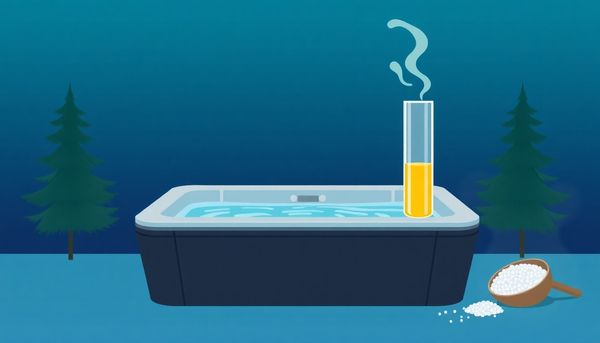
Steering clear of cyanuric acid in your hot tub might seem daunting, but several alternatives ensure clean, safe water without the complications CYA can introduce. Bromine stands out as a popular alternative that doesn't rely on cyanuric acid. Unlike chlorine, bromine tablets dissolve consistently, providing effective sanitation without the risk of chlorine lock or the need to monitor CYA levels.
For those who prefer chlorine, exploring unstabilized options is a wise choice. Liquid chlorine, commonly known as sodium hypochlorite, may lack the stabilizing CYA, but it efficiently sanitizes when used properly. A similar option is lithium hypochlorite, which dissolves quickly and adds no extra chemicals to your tub. These alternatives require a bit more vigilance in monitoring chlorine levels, yet they sidestep the complications associated with CYA buildup.
Beyond bromine and unstabilized chlorines, mineral sanitizer systems offer another route. Products like Frog @Ease use minerals to reduce the amount of chlorine or bromine needed, maintaining water clarity and reducing odors without complicating CYA levels. These systems are particularly user-friendly, automatically balancing minerals and minimizing your maintenance worries.
Ultimately, the choice of sanitizing method hinges on personal preference and maintenance style. Whether you lean toward bromine, unstabilized chlorine, or innovative mineral systems, each alternative offers a path to a cleaner, safer hot tub experience, free from the hassles of cyanuric acid.
In the world of hot tub maintenance, bromine emerges as a quiet hero, offering simplicity and peace of mind. Unlike its counterpart, chlorine, which often brings along the baggage of cyanuric acid (CYA), bromine operates independently, sidestepping the common pitfalls associated with CYA buildup. This makes it an intriguing alternative for those eager to embrace a more straightforward approach to hot tub care.
Bromine is particularly valued for its stability in higher temperatures and its ability to maintain effectiveness across a wider pH range. This can be a relief for those tired of the constant balancing act required by chlorine. The absence of CYA means you won't face the risk of "chlorine lock," a condition where chlorine's effectiveness is compromised, leading to potential water quality issues. Consequently, bromine tends to be more forgiving and requires less frequent testing and adjustment, offering a more relaxed maintenance schedule.
Personal experience might reflect the ease bromine brings. A friend once switched to bromine after growing weary of the constant chlorine adjustments. The result? Clearer water and fewer headaches. It's these personal stories that illuminate bromine's potential to transform hot tub care from a chore into a manageable routine. Choosing bromine not only simplifies your life but also offers a reliable path to a cleaner, more enjoyable hot tub experience.
Choosing unstabilized chlorine solutions offers a simple yet effective approach for maintaining your hot tub without the complications of cyanuric acid (CYA). Unlike stabilized chlorine, unstabilized variants such as liquid chlorine or certain pool shocks, do not contain CYA, making them an ideal choice for many hot tub owners. While these options may sound more suited to a pool environment, they provide a fresh perspective on hot tub care, particularly for those who wish to avoid the potential pitfalls of cyanuric acid build-up.
Consider the hot tub's typical setup: often shielded from the sun or indoors, the need for CYA's UV protection diminishes significantly. This makes unstabilized chlorine a smart choice, as it eliminates unnecessary chemical accumulation while maintaining effective sanitation. For example, liquid chlorine (sodium hypochlorite) is readily available and easy to manage, offering a straightforward method to keep your water crystal clear without elevating CYA levels.
On a personal note, using unstabilized chlorine has simplified my own hot tub maintenance routine. Without the worry of "chlorine lock" or ineffective sanitization due to high CYA, there's more time to enjoy the tub without constant monitoring. This approach not only safeguards water quality but also ensures a relaxing experience without the frequent need for adjustments or interventions. Switching to unstabilized chlorine can transform hot tub care from a chore into a seamless part of your leisure routine.
Navigating the twists and turns of hot tub maintenance can sometimes feel like decoding a mystery novel, especially when it comes to managing cyanuric acid (CYA) levels. The first step in effective CYA management is understanding the unique environment of your hot tub. Unlike pools basking in sunlight, many hot tubs are cocooned under covers or nestled indoors. This means the stabilizing effect of CYA isn't as crucial, given that UV light isn’t a primary concern.
Switching to unstabilized chlorine alternatives, such as sodium hypochlorite or lithium hypochlorite, can help manage CYA buildup. However, these options might not always be the best for hot tubs due to their high pH levels. Instead, consider using a hot tub-specific product or even bromine, which sidesteps the CYA issue altogether. By doing this, you maintain clean water without the stabilizer fuss.
Regular testing is your best ally in this endeavor. Utilize test strips or liquid kits—whichever suits your preference. Quick checks ensure CYA levels remain below 50 ppm, averting problems like "chlorine lock," where chlorine becomes ineffective. Personally, I've found that morning testing, right when the tub is idle, yields the most accurate readings.
Finally, embrace the simplicity of partial water changes if CYA levels creep up. Replacing some of the water can dilute excess stabilizer, providing a straightforward, effective solution. Keep it simple, keep it clean, and enjoy your tub with peace of mind.
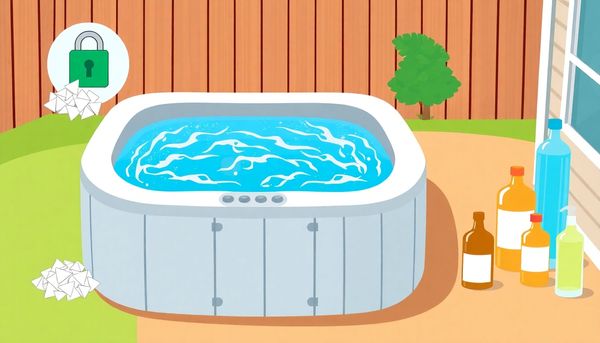
Cyanuric acid in hot tubs is like a double-edged sword; it has potential benefits but can also lead to troublesome pitfalls. As a hot tub owner, understanding these traps is crucial to maintaining a pleasant soak. Often included in chlorine products to stabilize them against UV degradation, CYA can accumulate over time, particularly in hot tubs shielded from direct sunlight. This gradual buildup may lead to "chlorine lock," rendering the chlorine ineffective and opening the door to murky water and potential bacterial invaders.
Personal experience has shown that sidestepping CYA issues often requires a shift in the products you use. Switching from chlorine to bromine is a straightforward move that can eliminate CYA concerns altogether. This transition isn't just about product preference; it's about achieving a more consistent and worry-free hot tub experience. However, if you're committed to sticking with chlorine, opting for unstabilized variants like liquid chlorine or specialized pool shocks may help.
Moreover, regular testing is your best friend. Test strips can provide a quick check on CYA levels, though for precision, a liquid test kit is advisable. It's like keeping a pulse on your tub’s health—quick checks can prevent long-term headaches. For those who prefer a hands-off approach, consider advanced systems like Frog @Ease, which manage sanitation proactively, eliminating the guesswork and allowing you to enjoy your tub without constant monitoring.
Embarking on the hot tub ownership journey involves a maze of maintenance choices. A simple decision, often overlooked, can save a lot of hassle: using bromine instead of chlorine. This shift can truly streamline your hot tub care routine, eliminating the need to worry about cyanuric acid (CYA) build-up. Unlike chlorine, which is often accompanied by CYA to protect it from sunlight, bromine does not require a stabilizer. This is particularly beneficial for hot tubs, which are frequently shielded from direct sunlight.
I recall my own struggle with chlorine and CYA when I first got my hot tub. The constant need to test and adjust levels was not exactly my idea of relaxation. Switching to bromine was a game-changer, allowing me to enjoy more soak time without the stress of chemical imbalances. Bromine simply does its job efficiently, without the added complexity that CYA introduces.
It's also worth mentioning the experience of many hot tub owners who have made the switch. They often praise bromine for its gentler touch on skin and eyes, which is especially important if you have family members who are sensitive to chemicals. Additionally, bromine continues to sanitize even at higher pH levels, offering greater flexibility and peace of mind.
Ultimately, choosing bromine can transform your hot tub maintenance from a chemistry project into a carefree escape. Embrace simplicity and let your hot tub serve its true purpose: relaxation and enjoyment, free from the complications of unnecessary additives.
Understanding and controlling CYA levels in your hot tub is like finding the perfect recipe balance—too much or too little can spoil the mix. While cyanuric acid might seem essential for pools, its necessity in hot tubs is debatable. Most hot tubs bask in shaded environments or rest under covers, minimizing UV exposure, and thereby reducing the need for CYA, which protects chlorine from sunlight. This makes its presence more an outcome of using stabilized chlorines like dichlor or trichlor than a true necessity.
Managing CYA isn't about chasing perfection but maintaining a comfortable range. If levels soar beyond 50 ppm, you're flirting with "chlorine lock," where your sanitizer loses its edge, inviting murky waters and potential bacteria. On the flip side, if levels drop too low, chlorine dissipates faster, though this is rarely a hot tub worry. Regular testing is your best tool here. I prefer using test strips for their speed, even if they're slightly less precise than liquid kits. It's akin to using a thermometer to check a cake's doneness—close enough is often just right.
Remember, in the morning, before the first splash, is the best time to test your water. This ensures you're measuring without interference from recent tub activity. If your CYA levels creep too high, a simple solution is refreshing your tub with some fresh water or opting for a CYA reducer. By keeping a mindful eye on these levels, you ensure a clean and enjoyable soak every time.
Testing your hot tub's water chemistry isn't just a chore—it's a safeguard for your health and pocket. For those who have ever experienced cloudy water or suspect a case of "chlorine lock," you know that maintaining the correct levels of cyanuric acid is crucial. While often overlooked, regular testing can prevent these common issues. A simple test strip can reveal a lot about your water's balance, allowing you to address potential problems before they escalate. Imagine discovering your CYA levels have crept higher than 50 ppm. It's a red flag indicating that your chlorine isn't working as effectively, which could lead to murky water or, worse, bacterial growth.
Instead of leaving it to chance, make testing a regular habit. It's quick and, with test strips, quite straightforward. A liquid test kit offers more precision if an exact reading is necessary, though it requires a bit more patience. I usually test my tub first thing in the morning, capturing a snapshot of the water's chemistry before anyone has used it. This ensures the most accurate results, guiding you to make informed decisions about adjustments.
By keeping tabs on your tub's CYA levels, you not only enhance your soaking experience but also extend the life of your hot tub's components. A well-maintained hot tub means fewer repairs and a more enjoyable, worry-free relaxation spot for you and your loved ones.
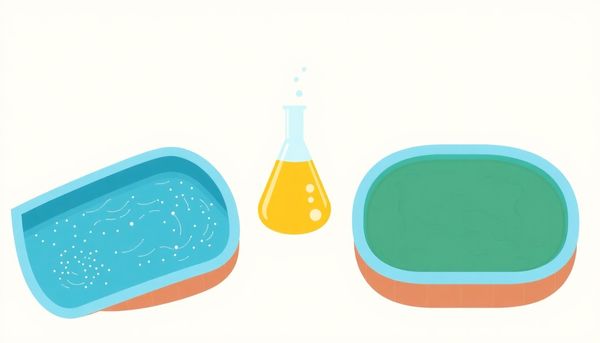
For those seeking a simpler path to pristine hot tub waters, the role of cyanuric acid often pops up as a point of contention. As a seasoned hot tub enthusiast, I've learned firsthand the unnecessary complexity it introduces. While many pool owners rely on cyanuric acid to stabilize chlorine against the sun's relentless rays, hot tub owners seldom face the same UV exposure, especially with the frequent use of covers.
Instead of wrangling with CYA levels, bromine emerges as a hero for hot tub maintenance. It sidesteps the pitfalls of cyanuric acid entirely. My friend switched to bromine last year and swears by the ease it brought to her routine. No more fretting over "chlorine lock" or dealing with the cloudy water that high CYA levels can cause. Her hot tub has never been clearer, and her maintenance time has significantly reduced.
If switching to bromine isn’t on the cards just yet, exploring alternatives like unstabilized chlorine might be a viable option. These solutions allow you to maintain a balanced hot tub environment without the headache of tracking CYA levels. Remember, choosing the right sanitizing method not only simplifies upkeep but enhances your soaking experience, ensuring that your hot tub remains a sanctuary of relaxation, rather than a chemical conundrum.
Once upon a time, I found myself tangled in the complexities of hot tub maintenance, wrestling with chemical jargon that felt more like deciphering ancient scrolls than a relaxing soak. One day, a friend suggested switching to bromine instead of chlorine, and the clarity it brought was nothing short of liberating. Bromine eliminates the need for cyanuric acid (CYA), which is often a source of confusion and potential issues in hot tubs.
For those unfamiliar, using chlorine in hot tubs typically means introducing CYA to stabilize it, preventing the rapid burn-off under sunlight. However, hot tubs aren't usually basking in direct sunlight like their pool counterparts, rendering CYA more of a hindrance than a help. High levels of CYA can lead to "chlorine lock," where the chlorine becomes less effective, potentially turning your tub into a bacteria playground. Not exactly the peaceful oasis we envision.
In contrast, bromine sidesteps these concerns beautifully. It doesn't require sunlight protection, which means no CYA, no risk of over-stabilization, and no need to constantly monitor those levels. It’s like choosing a less complicated recipe that still delivers the perfect dish. Bromine works efficiently in varying temperatures and pH levels, and its stability is unmatched—ideal for the fluctuating conditions of a hot tub. By choosing bromine, you embrace a simpler, more straightforward path to maintaining pristine, inviting water. It's a small change with big rewards, making your hot tub experience as carefree as it should be.
Accurately measuring cyanuric acid (CYA) in your hot tub is crucial, especially given its potential to complicate water chemistry. It’s like trying to follow a recipe without knowing exactly how much of each ingredient you've added. For many hot tub owners, the goal is to keep things straightforward, steering clear of the unnecessary hassle that CYA often brings.
Using a reliable test kit is the first step toward clarity. Test strips offer quick results, making them ideal for regular checks. Simply swirl a strip in your hot tub water sample, wait for a few seconds, and match the color change to the guide provided. While the speed and simplicity of test strips are unbeatable, for more precision, a liquid test kit becomes the tool of choice. These kits might require a bit more effort, but they repay you with accuracy, ensuring that your CYA levels stay within that sweet spot of 30-50 ppm.
A personal tip is to conduct these tests in the morning, before anyone dips into the tub. Morning tests capture the most stable chemical state of your water, free from the variables introduced by usage. Once you know your CYA levels, maintaining them becomes manageable, helping you avoid the pitfalls of “chlorine lock” and ensuring that your hot tub remains a place of relaxation, not chemical chaos.
In the realm of hot tub maintenance, excessive cyanuric acid levels can be a stealthy adversary. While the chemical might sound like an essential ally from pool care, in hot tubs, it often overstays its welcome. The main issue arises when cyanuric acid levels climb too high, leading to the infamous “chlorine lock.” This phenomenon renders chlorine less effective, allowing bacteria to flourish and turning your serene soak into a potential petri dish.
During one summer, I decided to put my chemistry skills to the test with my backyard tub. Armed with a test strip, I discovered my CYA levels were creeping past the ideal 50 ppm mark. This revelation was accompanied by an unusual cloudiness in the water—a telltale sign of chemical imbalance. To remedy this, I followed advice from seasoned hot tub enthusiasts: draining part of the water and refilling allowed me to dilute the CYA concentration effectively.
A further step to sidestep this issue is opting for unstabilized chlorine forms, such as liquid bleach or specialized products designed explicitly for hot tubs. These can maintain water clarity without introducing additional cyanuric acid. Alternatively, switching to bromine, which sidesteps the CYA saga entirely, provides a streamlined solution for maintaining a pristine hot tub environment. Keeping a vigilant eye on water chemistry can transform potential headaches into leisurely, worry-free moments in your bubbling oasis.
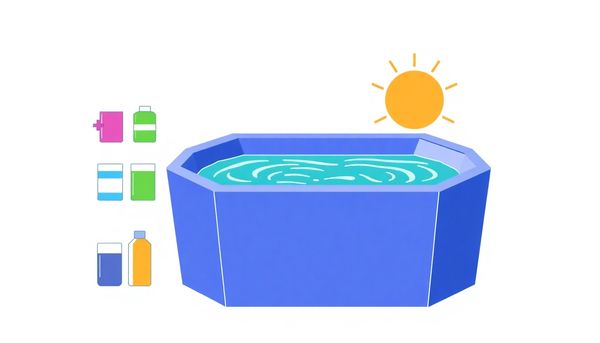
Bromine offers a refreshing alternative for those seeking a hassle-free hot tub experience. Unlike chlorine, which often brings with it the baggage of cyanuric acid (CYA) complications, bromine users can breathe a sigh of relief. This trusty sanitizer doesn't require stabilizers like CYA, which means you sidestep the whole issue of managing cyanuric acid levels. Imagine the peace of mind that comes with not having to constantly monitor or adjust the chemical balance due to CYA buildup, a common concern when using chlorine.
For years, I relied on chlorine in my hot tub, battling cloudy water and the occasional chlorine lock due to high CYA levels. Switching to bromine was a game-changer. This change meant fewer headaches and fewer adjustments, and it allowed me to focus on simply enjoying the soak without the constant worry of skin irritations or ineffective sanitization. Bromine remains effective in a wider range of pH levels, making it less finicky and more forgiving for those who prefer a low-maintenance routine.
Moreover, bromine is known for its softer smell and gentler feel on the skin, adding to the pleasure of a relaxing soak. For hot tub owners prioritizing easy care and a seamless experience, bromine presents itself as an ideal choice. By eliminating the need to juggle CYA levels, you not only protect your health but also enhance the longevity of your tub, making bromine a wise and practical option.
Navigating the world of hot tub maintenance can feel like decoding a secret language, especially when it comes to chemicals like cyanuric acid (CYA). While CYA plays a valuable role in outdoor pools by protecting chlorine from sunlight, in the cozy confines of your hot tub, it often does more harm than good. Too much CYA can lead to a dreaded condition called "chlorine lock," where the chlorine becomes ineffective, turning your soothing soak into a breeding ground for bacteria and algae.
Keeping CYA at bay starts with the choice of sanitizer. If chlorine is your go-to, opt for unstabilized forms like sodium hypochlorite, commonly known as liquid bleach, or specialized hot tub shocks free from CYA. This choice helps prevent the gradual buildup that traditional chlorine tablets or granules can cause. However, bromine offers a hassle-free alternative, as it sidesteps the cyanuric acid issue altogether. This makes it a preferred choice for those prioritizing ease and effectiveness.
Monitoring your hot tub's CYA levels is crucial. A simple test strip can provide a quick glimpse into whether your levels are creeping too high. If they are, dilution is your best friend. Replacing a portion of the water with fresh water can lower excessive CYA levels, restoring balance and ensuring your hot tub remains a clean, safe sanctuary. Remember, in the quest for perfect hot tub water, less is more when it comes to cyanuric acid.
Stepping into the world of hot tub maintenance, one quickly realizes the importance of keeping things straightforward without compromising on safety. Cyanuric acid, while a friend to pool owners, can be a bit of a foe for hot tub enthusiasts. Its role in preventing chlorine breakdown under sunlight is invaluable for pools, but in a covered or enclosed hot tub setting, its benefits shrink significantly.
Understanding this can save you from the bothersome “chlorine lock” syndrome, where the sanitizer becomes ineffectual, allowing bacteria and algae to thrive. Instead, consider a switch to bromine-based sanitizers. Bromine doesn’t interact with cyanuric acid, offering a more stable and hassle-free alternative. It’s like choosing the right puzzle piece that fits without forcing anything, ensuring a seamless maintenance routine.
Regular testing of water chemistry is your best ally here. A quick dip of a test strip every week can keep you informed about the chemical balance, ensuring your tub remains a sanctuary rather than a science experiment gone awry. If you prefer a more tech-savvy approach, automated systems like FROG @ease can take over, delivering sanitizer only when needed and freeing you from constant monitoring.
By keeping it simple and opting for solutions that align with the specific needs of a hot tub, maintenance becomes less of a chore and more of a routine that guarantees crystal-clear waters and a safe, relaxing soak every time.
Taking a leisurely soak in a hot tub is one of life’s simple pleasures, yet managing water chemistry can sometimes complicate matters. Opting for bromine over chlorine could simplify this task and enhance your hot tub experience. Unlike chlorine, bromine does not require cyanuric acid (CYA) stabilization, thus eliminating the risk of CYA buildup and the dreaded “chlorine lock” scenario. This means you can skip the constant worry about maintaining CYA levels, freeing you to enjoy your time in the tub without the hassle of extra chemical management.
Bromine is also revered for its gentle nature on the skin and eyes, making it a preferred choice for those with sensitive skin or allergies. It's a common experience among bromine users to notice a significant decrease in skin irritation and a more comfortable soak. Moreover, bromine remains effective in a wider pH range compared to chlorine, offering a buffer against minor water balance fluctuations. This additional flexibility allows for less frequent water testing and adjustments, providing a more relaxed hot tub ownership experience.
The maintenance benefits extend beyond chemistry. Bromine retains its sanitizing power longer, meaning fewer interventions and peace of mind knowing your hot tub is consistently clean. So, when ease and comfort are your priorities, bromine might just be the unsung hero of hot tub sanitization, turning a potential headache into a seamless part of your relaxation ritual.
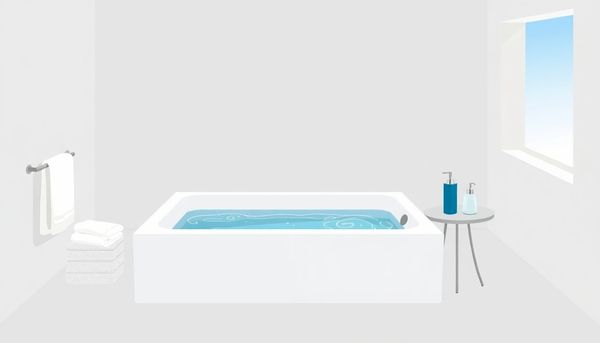
Testing and managing the CYA levels in your hot tub isn't just a routine chore—it's a key step in maintaining water that's both safe and pleasant to soak in. Think of it as checking the pulse of your hot tub’s health. While CYA is meant to protect chlorine from being degraded by sunlight, hot tubs, often shielded from direct sun, typically don’t require this stabilizer. So, if you’re using chlorine, staying vigilant about CYA levels can prevent a host of issues.
Excessive CYA can lead to "chlorine lock," a situation where chlorine's effectiveness is significantly reduced. Imagine lounging in your tub only to find it murky with an uninviting odor—hardly the retreat you had in mind. A simple test strip can help avoid this scenario by giving you a quick snapshot of your CYA levels. These strips are like your hot tub's report card: dip one in a water sample, wait a brief moment, and compare the color to the provided chart.
For those who prefer precision, a liquid test kit offers more detailed insights, though it requires a bit more patience. Testing in the morning, before the tub has been used, ensures the most accurate reading. Should your CYA levels creep above 50 ppm, consider diluting your hot tub with fresh water or exploring alternatives like a CYA reducer. By keeping these levels in check, you ensure your hot tub remains a sanctuary of relaxation and not a breeding ground for problems.
Bromine brings an elegance of simplicity to hot tub care that many owners find refreshing. When my neighbor switched from chlorine to bromine in his hot tub, the immediate sigh of relief was palpable. Unlike chlorine, bromine doesn’t require the additional vigilance over cyanuric acid levels. This makes the routine of testing and balancing chemicals significantly easier, allowing more time to simply enjoy the bubbly bliss of a soak.
There’s a certain peace of mind in knowing that using bromine sidesteps the issue of “chlorine lock.” This condition, caused by excessive cyanuric acid, renders chlorine less effective and can turn your hot tub experience into a cloudy, frustrating ordeal. Bromine, however, maintains its effectiveness without needing stabilizers like CYA, offering a more straightforward approach to maintaining clear and clean water.
Moreover, bromine’s performance doesn’t waver with fluctuating temperatures or pH levels, which is a boon for hot tub users who prefer low-maintenance solutions. It continues to sanitize efficiently, ensuring that every dip is a safe and pleasant one. My own experience with bromine has been marked by fewer chemical smells and softer water, enhancing the overall relaxation.
Switching to bromine not only reduces the complexity of managing your hot tub but also brings added advantages that can enhance your soak. For those tired of the constant juggling act with chlorine and cyanuric acid, bromine is a straightforward, effective alternative.
Chlorine lock might sound like a minor inconvenience, but it’s a silent disruptor in the world of hot tub maintenance. This phenomenon happens when excess cyanuric acid (CYA) inhibits chlorine’s power to sanitize, leading to murky water and a proliferation of bacteria and algae. If you’ve ever peered into your hot tub, only to be met with a cloudy haze instead of crystal-clear waters, you might have encountered the effects of chlorine lock firsthand.
Every hot tub owner can relate to the frustration of balancing water chemistry. Unlike pools, hot tubs generally do not require the stabilizing benefits of CYA because they aren't as exposed to direct sunlight. Adding chlorine products that contain CYA can thus lead to unnecessary buildup, complicating what should be a straightforward maintenance routine. For those using chlorine, it’s beneficial to switch to unstabilized chlorine forms to prevent these issues.
Testing regularly is your ally in maintaining proper CYA levels. While test strips provide quick insights, a liquid test kit can offer more precision, especially if you suspect an imbalance. If you find yourself dealing with high CYA levels, the best course of action is to partially drain and refill the tub or to consider CYA reducers. Ultimately, opting for bromine eliminates the risk entirely, allowing for a more carefree hot tub experience.
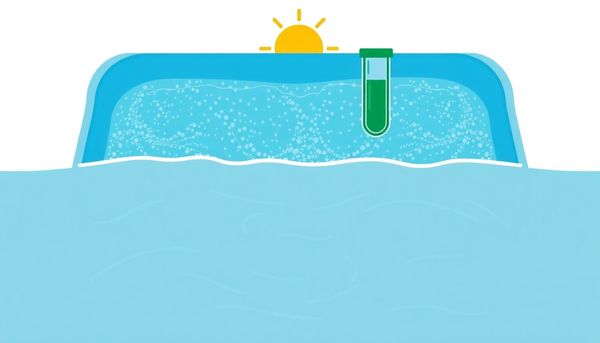
This article provided insights into maintaining your pool. Start your pool care journey today!
Want to become a pool maintenance expert? Our free Pool School course covers everything you need to know about pool care. From basic maintenance to advanced troubleshooting, you'll learn how to:
Join over 10,000 pool owners who have already transformed their pool care routine. Get started with our free Pool School course today!